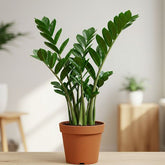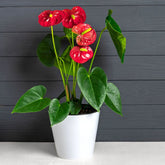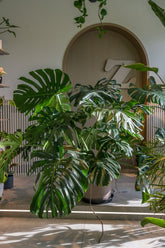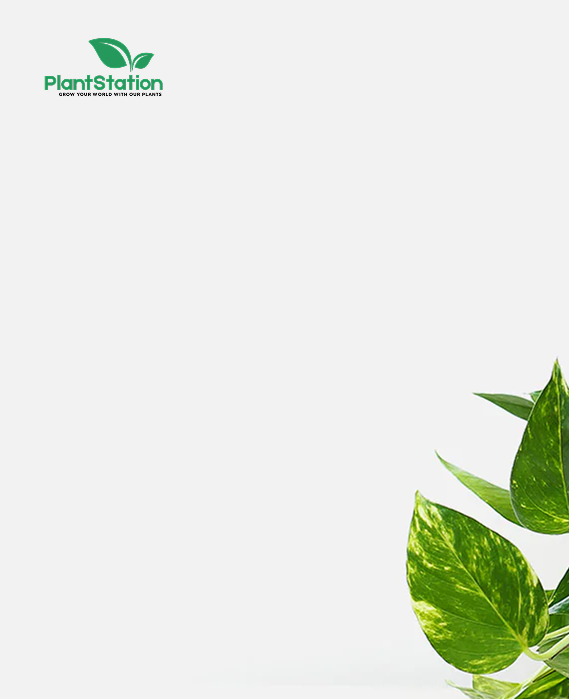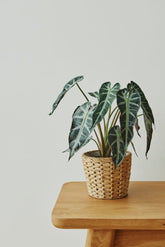Call Us +971 55 174 0095
Plantshop, Landscaping, Gardening & Plant Care Services
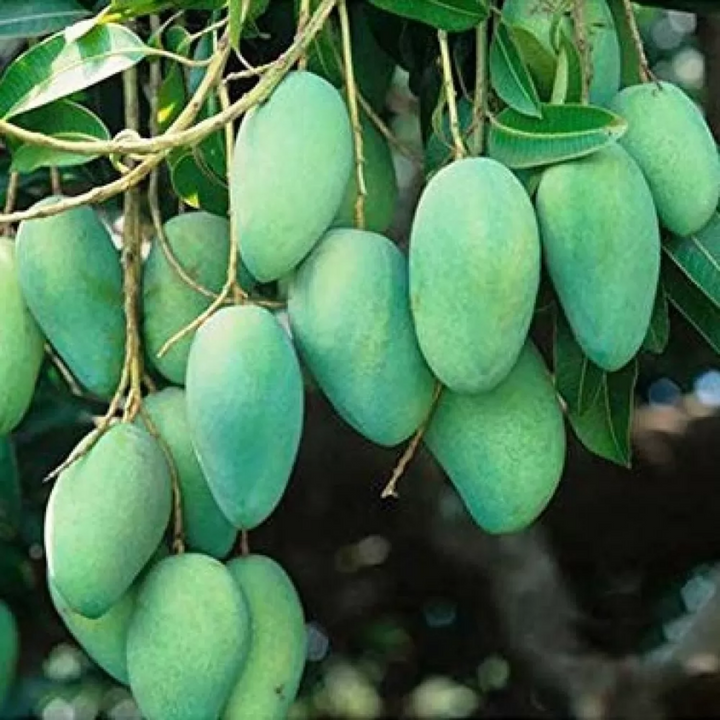


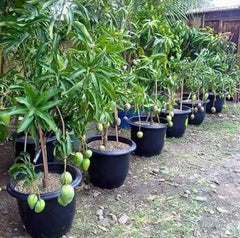
Mango Thailand
- AED 350.00
- AED 350.00
- Unit price
- per
Couldn't load pickup availability
Description
xMango Thailand (Mangifera indica)
The Mango Thailand is a collection of mango cultivars originating from Thailand, highly regarded for their aromatic fruits and distinct, complex flavors. Renowned for their sweetness, texture, and flavor profiles, these Thai mango varieties have become some of the most sought-after mangoes globally. Whether consumed fresh, as part of traditional dishes, or incorporated into desserts, Mango Thailand varieties offer a unique tropical experience. They thrive in tropical climates with abundant sunlight and well-drained soil.
5 Unique Benefits of Mango Thailand
-
Exquisite Flavor Profile
Thai mangoes are known for their sweet, aromatic taste and unique texture. Varieties such as Nam Dok Mai are particularly famous for their low fiber, smooth texture, and intense floral fragrance, making them ideal for both eating fresh and using in traditional Thai desserts like sticky rice with mango. -
Culinary Versatility
Mango Thailand varieties are incredibly versatile in the kitchen. They are commonly used in savory dishes, like mango salad and salsas, as well as in desserts and smoothies. Their balance of sweetness and acidity enhances the flavors of both sweet and savory recipes. Thai mangoes can be eaten ripe or unripe, with the latter often used in pickles or spicy dips. -
Nutritional Value
Like all mango varieties, Thai mangoes are nutrient-dense, rich in vitamin C, vitamin A, fiber, and antioxidants. The fruit helps boost immunity, improve skin health, and support digestion. Mango Thailand varieties are also low in calories and make a healthy snack or addition to any diet. -
Cultural Significance
Thai mangoes have deep cultural roots in Thailand and Southeast Asia. They are an integral part of traditional Thai dishes and festivals, often associated with celebrations and special occasions. The famous "Mango with Sticky Rice" is a cherished dessert that combines ripe mango with sticky rice, coconut milk, and sugar, symbolizing the sweetness and abundance of Thai culture. -
Economic Value
Mango Thailand cultivars are not only a popular item in Thai cuisine but also a significant export product. Thailand is one of the top mango producers in the world, and the international demand for these sweet, aromatic mangoes has led to a lucrative industry for both farmers and exporters. The economic benefits of cultivating Mango Thailand extend beyond local consumption, contributing to Thailand's economy and agricultural sector.
Disadvantages of Mango Thailand Cultivars
-
Climate Sensitivity: Like most tropical mangoes, Mango Thailand varieties require a consistently warm climate with full sun. They are sensitive to cold temperatures and frost, which can damage the fruit and the tree.
-
Space Requirements: Mango trees can grow quite large, requiring ample space for their root systems and canopy. This can be a limitation for those with smaller gardens or indoor spaces.
-
Pest and Disease Risks: Mango Thailand varieties, like other mango cultivars, are susceptible to pests such as fruit flies, mango weevils, and diseases like anthracnose. Regular care and pest control measures are needed for healthy fruit production.
-
Slow Fruit Production: Mango trees can take 3-5 years to start bearing fruit if grown from grafted saplings, and even longer if grown from seed. Patience is required for those hoping to enjoy homegrown mangoes.
Frequently Asked Questions
-
How long does it take for Mango Thailand trees to bear fruit?
Mango Thailand trees typically take 3-5 years to start producing fruit if grown from grafted saplings. Trees grown from seed may take longer. -
Can Mango Thailand trees be grown indoors?
Mango Thailand trees thrive in tropical climates, so growing them indoors in non-tropical areas is challenging. However, dwarf mango varieties can be grown in containers indoors in areas with sufficient sunlight. -
How do I care for a Mango Thailand tree?
Mango trees require well-drained soil, regular watering, and fertilization during the growing season. They need full sun for optimal fruit production and thrive in warm temperatures (ideally 77°F to 95°F or 25°C to 35°C). -
Are Mango Thailand trees susceptible to pests?
Yes, like other mango trees, Mango Thailand cultivars can be affected by mango weevils, fruit flies, and anthracnose. Proper pest management and monitoring are essential. -
What are the best uses for Mango Thailand in cooking?
Mango Thailand varieties are best used fresh, sliced into salads, salsas, or desserts. They also make excellent additions to smoothies, juices, and traditional Thai desserts like sticky rice with mango.
Final Verdict: Should I Plant Mango Thailand?
If you're located in a tropical or subtropical region with adequate space, sunlight, and well-drained soil, planting a Mango Thailand tree is a rewarding investment. Not only will you enjoy the delicious fruit, but you'll also gain the aesthetic and cultural benefits that come with cultivating these tropical beauties. Whether you're growing them for personal consumption, as a garden centerpiece, or as a small-scale farming venture, Mango Thailand varieties are worth considering for anyone passionate about tropical fruits.
Plant Care
xWatering
Water your plant once a week or when the soil starts to feel slightly dry on the surface. Keep the soil consistently moist, but be careful not to overwater, as this can cause brown spots and leaf drop. If the leaves become curly or dry, it's a sign that the plant needs water. It's best to water your plant in the early morning or late evening when the temperatures are cooler. Always check the soil before watering.Light
Provide bright indoor light or indirect sunlight for about 6 to 8 hours a day.Temperature
Maintain temperatures between 18°C and 24°C. Avoid exposing the plant to drafts, as these can cause undesirable temperature fluctuations. Mist the plant occasionally, about twice a week, to help maintain optimal humidity levels.Fertilizer
Apply liquid fertiliser every 15 days when the plant is actively growing. For best results, use Folikraft ready-to-use Indoor Plant Food.- Comodous:
- Comodous in tempor ullamcorper miaculis
- Mattis laoreet:
- Pellentesque vitae neque mollis urna mattis laoreet.
- Divamus de ametos:
- Divamus sit amet purus justo.
- Molestie:
- Proin molestie egestas orci ac suscipit risus posuere loremous
Related Products
Recently Viewed Products
- Choosing a selection results in a full page refresh.

